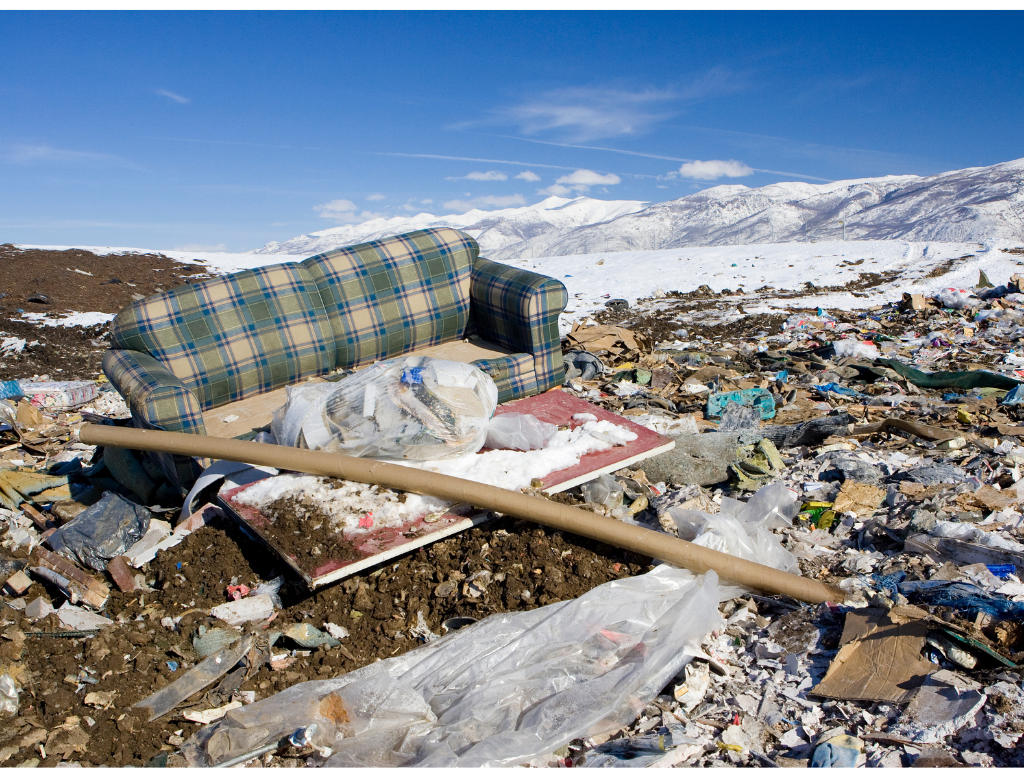By Monica Rhodes, NUA Volunteer and Owner of Monday Wash Furniture
My Evolving Perspective
I have always been a proponent of re-use. As a little girl, I treasured dolls and other toys passed on to me by my grandma. For my high-school homecoming dance, I wore a lace suit that belonged to my mom and, for prom, I rented a tuxedo rather than buy a dress. Much of my current wardrobe is second hand and my home is furnished, almost entirely, with pieces that were my parents’ or were purchased from antique and resale stores. Some of these pieces are hundreds of years old and all are still up to the task of providing comfort and support. I’d like to say that I routinely re-use for altruistic reasons, but that’s not really true. While I deeply appreciate the benefits to the environment of rescuing, repurposing and reusing, the truth is that my primary driver is simply that I love old stuff. I find old things beautiful to the eye and to the touch and I am hopelessly enamored of their intrigue, history and mystery.
Days of late, though, I’ve been giving more thought to the larger picture. I have learned a lot through my membership in the NUA – from people I’ve interviewed, like Kriss Kokoefer, owner of Kay Chesterfield in Oakland, CA, and from board and committee members including Carla Pyle, and Jamie Facciola. These women apply their great minds, endless heart and collective sense of purpose to protecting the earth and human health on a daily basis.
.png)
A Global Fast and Furious Race to the Bottom
Recently, the NUA, as an act of solidarity with garment workers, has shared posts related to Fashion Revolution Week, an annual event organized by the not-for-profit organization Fashion Revolution. The Fashion Revolution movement arose in 2013 following the deaths of 1,134 Bangladeshi garment workers, and the wounding of 2,500 more, in the collapse of an eight-story building that had been declared unsafe for use. It is not news that garment workers have long been exploited but the overall culture shift, in recent decades, to unprecedented levels of product consumption and waste has led to a ballooning in the number of lives on the line and has gravely amplified the magnitude of their risk. The collapse of Rana Plaza that April morning in Savar Upizila, Bangladesh was the fourth largest industrial disaster in history. Despite that horror, covered in the news and witnessed by the world, thousands upon thousands of garment workers around the globe, including undocumented workers in the United States, have reported for duty every day since- under appalling conditions that do not yield a living wage. “Brands want to keep their profits high and their costs down so they will move orders to whichever factory will make it cheapest. To get the work, factories often compete to pay the lowest prices. They cut corners on health and safety. Slash wages. It’s a race to the bottom,.”writes Martine Parry on the Fairtrade blog.

Image source: Fashion Revolution Instagram
“Fast Fashion” has become a well-recognized phenomenon. Dana Thomas of the Wall Street Journal notes, “Workers and the environment suffer as trendy, inexpensive clothes are swiftly mass produced in subcontracted factories and sold in chain stores world-wide…American shoppers snap up about five times more clothing now than they did in 1980.” Sadly, these items are often discarded as quickly and remorselessly as they were made.
“Fast Furniture” is the lesser recognized but equally destructive equivalent to “Fast Fashion”. “As with fast fashion, fast furniture’s environmental problems are closely tied to ethical issues: the transfer of domestic manufacturing overseas where companies can pay lower wages,.” Eleanor Cummins writes in The New Republic. Similar to garment workers, thousands of people in the furniture production chain report to factories each day to crank out mass produced pieces that are not likely to last more than a few years. As these pieces occasionally end up on our benches, we upholsterers have witnessed the evidence: chemical laden particleboard and other inferior quality materials held together with bits of plastic and rubber and covered over with random forms of padding and a deceptively attractive outer fabric layer. When this happens, we have to help our clients decide: Does it make sense to reupholster this piece? Can we shore the frame up with better quality materials to give it the strength to last? Sometimes, the answer is yes. But where does the staggering majority of these rapidly assembled products born of hard, under compensated labor end up? In the landfill, serving no one and harming everyone.

Fast Furniture mirrors fast fashion in many ways, but it is an even more challenging problem to address in one regard in particular: size. To be considered are the amount of materials that go into large and complex pieces of furniture (like sofas and recliners), the energy it takes to ship those pieces from overseas factories (and the pollution that causes), the volume it occupies in landfill (9.8 million tons of furniture went to US landfills in 2017, double 1990 volume and 5 times 1960 totals, see “Re-up and Re-use” infographic), and the fact that sheer unwieldy size is one of the primary reasons furniture is tossed to the curb. In today’s culture, it is common for adults to change jobs many times before retirement. This means moving more frequently and often choosing to rent instead of buy homes. Moving furniture is logistically difficult and expensive. Particularly for young people who have not accumulated savings, it just seems to make sense to toss a sofa bought for a few hundred bucks a couple of years ago (that has perhaps become wobbly, broken and/or less fashionable) and buy a new one to compliment the new space.
Ways to Participate
New high-quality furniture is expensive, but solidly built older pieces may be found in abundance in antique and resale shops. Found, purchased and heirloom furniture can be updated to fit a range of tastes and spaces and, if maintained, will be readily welcomed back by resale shops should a change be in order. Upholsterers can do their part by informing the public of the benefits of re-upholstery, giving good council as to whether or not reupholstering a piece is advisable, and discussing the fabric, padding and structural design options that are feasible in relation to the client’s budget.
I encourage consumers to reach out to local upholsterers to discuss options for updating and maintaining furniture. That said, I know that re-upholstery is not an option for everyone, and that everyone needs furniture. The situation is such now that sometimes the best/most rational option is to buy new at the lower prices on offer. During Fashion Revolution Week, advocates for garment workers urge the public to ask apparel companies, “Who made my clothes?” and to demand transparency regarding the chain of production with the goal of transforming it to value and serve the health and well being of people and the planet above profit. One of the things I like best about old furniture is that every piece has a story. New pieces have stories, too. We should be asking, “Who made my furniture? And where? And how? And with what materials? What does that mean for us and for our children and for our planet? What can we do, and push big companies to do, to be sure that story has a happy ending?
Kriss Kokoefer is on a successful mission to convince large corporations to “Re-up(holster) and Re-use”. Toward this end, she has created a furniture waste infographic that she employs to sway companies to retain a percentage of their furnishings when relocating and/or redecorating, and to engage in maintenance contracts to regularly service and update (rather than discard) furniture that requires attention.
Carla Pyle, owner of Natural Upholstery has made it her business to help tradespeople, DIYers and consumers learn the benefits and practical ins and outs of sourcing and using natural materials.
Jamie Facciola’s writings and presentations on circular economy are passionately revelatory and her Instagram personification of furniture items kicked to the curb in Oakland, CA is at once razor sharp witty and heartbreakingly poignant.